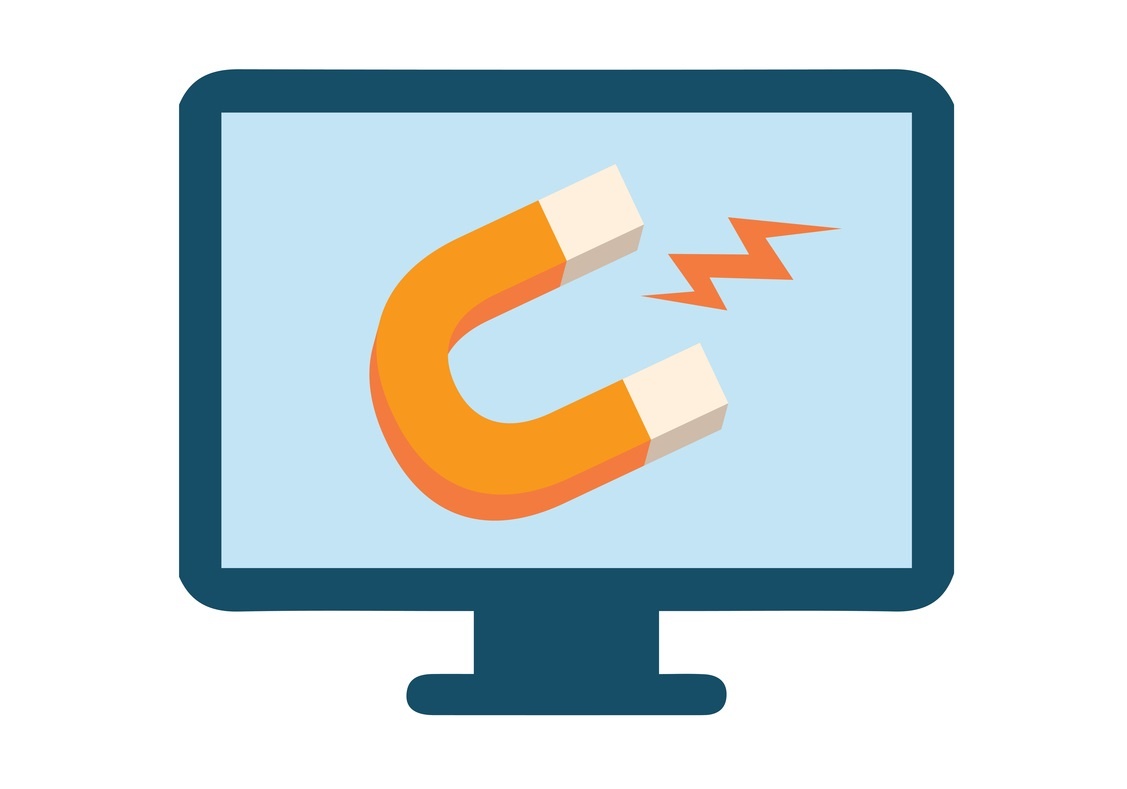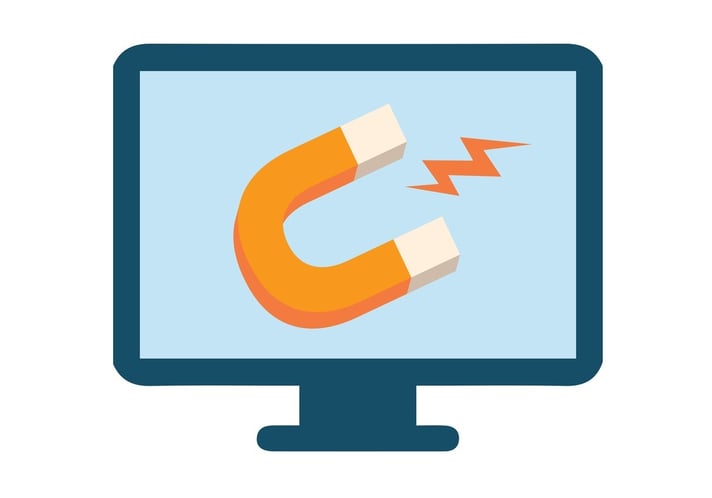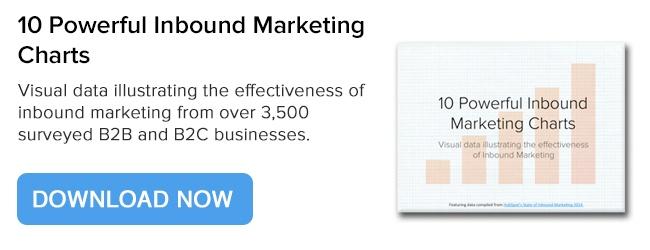Using Lead Magnets to Boost Your Inbound Marketing Reach
By Jaco Grobbelaar on Fri, Sep 29, 2017 @ 01:01 PM

Success with inbound marketing hinges on attracting leads and subscribers. And using valuable, free content known as "lead magnets"can make that happen in a dramatic fashion.

A "lead magnet" is a nicely descriptive term, but what is it exactly? Essentially, a lead magnet is simply something free - usually some type of content - that a website visitor receives in exchange for their email address.
Barry Feldman of Feldman Creative notes that:
"Lead magnets are also called: Signup incentives, Signup offers, Freemiums, Content upgrades, and many other terms."
For our purposes in this post we will stick with the term "lead magnet" since it evokes the attractive nature of the piece.
Samples Sell
Anyone working in a retail business, especially one that deals with physical products, knows that free samples have a powerful appeal for prospects. Especially things you can eat or drink! Think See's Candies. They give out samples daily and part of their success can be firmly tied to that practice.
A more obtuse example is the Grateful Dead and their commitment to allowing bootleg recordings of their concerts. In their book Marketing Lessons from the Grateful Dead: What Every Business Can Learn from the Most Iconic Band in History, authors David Scott Meerman and Brian Halligan point out that,
"The Dead pioneered a “freemium” business model, allowing concert attendees to record and trade concert tapes, building a powerful word-of-mouth fan network powered by free music. It’s a model that has influenced many of today’s very best marketers."
In a very real way, lead magnets can be seen as samples. Valuable content, actionable material that prospects can use, can be viewed as samples of your expertise, knowledge, and abilities. A snippet of what you offer or what you can do is contained in every lead magnet.
Or it should be!
Be Generous, Be Consistent
Another factor with using lead magnets to increase your email lists is that one-off pieces rarely do the job completely. In fact, the better approach is to plan and produce a series of lead magnets ongoingly, mixing a few time-sensitive or contemporary topics with a slew of "evergreen" material. This way, the bulk of your freebies can be used and re-used for years, even if they might require a bit of tweaking now and again to stay up to date.
Lead magnets are a hugely effective way to turn website visitors into subscribers. Brands that incorporate them into their regular blog posts and other online venues routinely see significant boosts in their opt-in rates.
A lead magnet is content that is ideally suited as supplementary content for an existing blog post or article. Typically, a link will be inserted near the end of your post or article. The reader will need to subscribe to your email list in order to download it.
For many of us this is a very familiar process. Odds are that all of us have signed up for a newsletter or email series in exchange for getting an eBook, guide, or tip sheet - some type of content that we found appealing or potentially useful.
The process requires at least three elements:
- A clear and engaging call to action, or CTA. This is the link and it can take on a variety of designs and styles, but it should be seen as a separate element from your post or article content.
- A simple opt-in form. There will probably always be some disagreement on how much information to ask for, but we lean towards a basic form that asks for a name and an email address. Period.
- Automatic access to the content. Ideally, this should be almost instantaneous. Whether the download appears as a pop-up, or the subscriber gets an email with access, it should be quick and easy.
Create Content That Rocks - and Gets Downloaded
There are any number of ways to produce great lead magnets. But there are also a few factors that make some more successful than others. For example, your free content lead magnet should be actionable and useful. It should be designed to help your reader take action on the blog post or article they read prior to downloading your lead magnet.
Avoid producing and offering superficial, "fluffy" content with little substance. Err on the side of "over delivery" and your brand's perceived value will skyrocket. Also, don't try to "sell" in your lead magnet. You already have their email address now - that's where any selling will begin to happen. Not in your freebie content.
As for logistics, always be sure to include a lead magnet with as many blog posts as possible. The most successful brands will include an offer in every post and every article. While that may be a bit much for you right now, remember that some of your free content pieces can be used with different posts as long as the subject is related.
Another tactic is to place a call-to-action link at least once near the middle of of your blog post, and again at the end. While you do want to avoid the appearance of overkill or being spammy, you also want to make sure your prospects know they can get that wonderful, free content with just a few clicks and an email address!
Here's a real example:
Your lead magnets are not only for gaining new subscribers, but can be effective tools for nurturing your existing audience, as well. According to Brian Casel at Audience Ops subscribers routinely opt in for five or more different lead magnets over the life of their subscription.
Inbound Marketing Thrives on Subscribers
Inbound marketing is primarily built on a business blog, first and foremost. While it is not the only tool used, your company blog provides the valuable information for your audience and become a trusted resource.
And this happens not only with the blog content itself, but from the added value of your targeted lead magnets and bonus content.
By building a platform to provide quality content for your clients and prospects you will be able to leverage this reach to drive website traffic for your company. It is not the only component of an effective digital marketing strategy, but it can serve as main driver of traffic:
Every time you write a blog post, it's one more indexed page on your website, which means it's one more opportunity for you to show up in search engines and drive traffic to your website in organic search... Blogging also helps you get discovered via social media. Every time you write a blog post, you're creating content that people can share on social networks -- Twitter, LinkedIn, Facebook, Pinterest -- which helps expose your business to a new audience that may not know you yet.
- Corey Wainwright at HubSpot
The primary purpose of your business blog is to drive traffic to the company website. Yes, it also serves to strengthen the brand, provide valuable content, and provide a forum to speak directly to your audience. But it is first and foremost a major path for more website visitors.
Here are some statistics from Hubspot on business blogging that should make an impression on you:
- Before engaging with a sales rep 47% of buyers viewed 3-5 pieces of content.
- 94% of people who share posts do so because they think it might be helpful to others.
- Blogging is the most important piece of content strategy according to 45% of marketers.
- Blogs have been rated as the fifth most trusted source for accurate online information.
- Companies who blog regularly receive 97% more links to their website.
Your Content Creation Partners
An additional tactic for creating and publishing effective lead magnets is to get outside help. A digital marketing agency such as BroadVision Marketing can offer expertise and tools that the typical business owner or marketing manager may not have.
In addition, it often helps to have a professional marketer's perspective to assess your overall inbound marketing strategy. Acquiring the insights of a third-party professional is an investment that can bring a quantifiable return.
BroadVision Marketing offers all this and more. Get your Free Complimentary Inbound Marketing Session to help you make an informed decision or call BroadVision Marketing at 707-799-1238.
In the meantime, we invite you to subscribe and get this great, free content!
You May Also Like
These Related Stories

Content Marketing With Lead Magnets [Part 1]

Content Marketing Is The Driving Force Of Inbound Marketing

.png?width=302&height=75&name=BVM%20Logo%20-%20transparent%20(1).png)



No Comments Yet
Let us know what you think